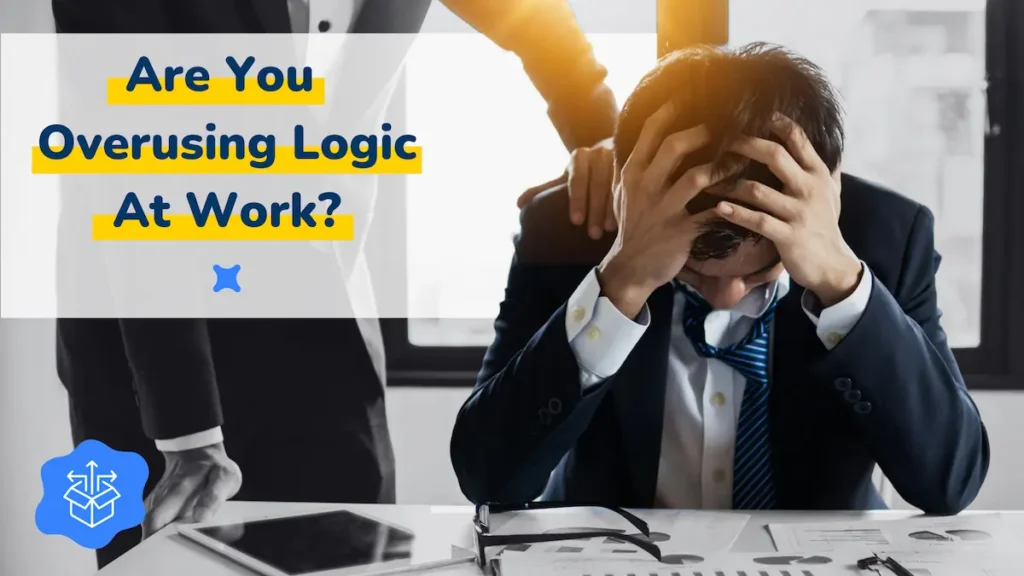How Lateral Thinking Builds Better Leadership
In short: smarter decisions, better problem solving, more resilient teams.
In leadership, you’re often expected to have the answers, or at least a plan, the next step, the strategy that gets everyone from stuck to sorted.
But what happens when the answers aren’t obvious, when logic hits a wall and the usual strategies fall flat?
That’s where lateral thinking makes all the difference. And it’s not about being creative or clever for the sake of it, but about being able to shift perspective and bring your team with you.
In this article, we’ll explore:
- what lateral thinking really is
- why it’s a must-have skill for modern leaders
- how to practise it in real-world contexts
- how it connects to the broader cognitive skills that drive high-performance thinking
So let’s dive in!
What Is Lateral Thinking and Why Does It Matter in Leadership?
Lateral Thinking is a way of approaching problems from unexpected angles. It means asking “What else?” instead of only “What next?”
It’s not a rejection of logic or critical thinking; rather, it complements them:
- Logical thinking helps you evaluate options and follow steps.
- Lateral Thinking helps you find the options you didn’t know existed
As Edward de Bono (who coined the term) described, it’s an escape from the “dominating idea”. A shift away from the obvious. In leadership, this often means stepping back to ask the uncomfortable questions or rethinking problems others have stopped questioning.
And that’s what sets leaders apart: not just how well they execute plans, but how often they reshape the map.
How to Practise Lateral Thinking as a Leader
Lateral Thinking is a trainable skill, and it fits seamlessly into your existing role, especially when the stakes are high or the path ahead is unclear.
Here are a few practical ways to build it into your leadership day-to-day:
🔄 Constraint Reframing
Use it when: your team says “we can’t do this because…”
What should you do: Add or shift a constraint deliberately, by asking:
- “What would we do if we had to deliver this with zero budget?”
- “What would our approach be if we had only 3 hours?”
Leadership benefit: This technique helps uncover hidden assumptions and sparks resourceful thinking. It’s especially useful in strategy meetings and budget planning.
🎭 Multiple Perspectives Drill
Use it when: you and your team are stuck in a people-related issue or facing resistance.
What should you do: Challenge yourself and your team:
- “How would a competitor see this?”
- “What might a new hire notice that we’re missing?”
- “What if the opposite of our assumption were true?”
Leadership benefit: This improves perspective-taking, deepens empathy, and can dissolve conflict before it escalates.
💬 What-If Roundtables
Use it when: decision-making stalls or ideas feel flat.
What should you do: Host a 10-minute session where the team can only ask “What if…?” questions about the problem. No solutions. No critique.
Leadership benefit: It breaks hierarchical thinking, energises ideation, and makes team members feel heard, especially quiet ones.
🧠 Flip & Focus
Use it when: urgency is creating tunnel vision.
What should you do: Take a moment alone to ask:
- “What are we solving too quickly?”
- “What’s the question we’re not asking?”
Leadership benefit: It restores strategic thinking when urgency tries to override judgment.
How Lateral Thinking Connects to Other Cognitive Skills
At inGeniusly, we work with 12 core cognitive skills. But Lateral Thinking – like all 12 skills – isn’t isolated from the others, it interacts with them.
Cognitive skills are not standalone abilities, but parts of a dynamic system. The real impact comes when they combine: when lateral thinking sharpens problem solving, when critical thinking anchors creativity, when focus guides innovation.
Here’s how combining Lateral Thinking with some other leadership skills will give you an edge:
- Critical Thinking: Lateral Thinking supplies the alternatives. Critical thinking evaluates them. Together, they help you avoid both blind spots and bad calls.
- Problem Solving: So many solutions fail because they’re aimed at the wrong problem. Lateral Thinking helps you reframe and redirect your effort.
- Attention to Detail: While lateral thinking zooms out, attention to detail zooms in. Leaders need to be able to shift between the two.
- Focus: Strategic focus isn’t about tunnel vision, rather about knowing when to stay on the path and when to step off it. Lateral Thinking keeps focus intentional.
- Decision Making: Fast decisions aren’t always the best. Lateral Thinking gives you more options to choose from and helps you make decisions that align with long-term goals.
- Presentation Skills: Lateral Thinking sharpens how you frame your message. Great communicators don’t just explain, they help others see differently.
By strengthening your lateral thinking, you’re not only solving problems, you’re upgrading the entire way you lead, learn, and influence.
Build a Team That Thinks Sideways Too
Lateral Thinking isn’t just a personal skill. It’s a team advantage.
You can start shaping a culture that values it by:
- Rewarding curiosity, not just correctness
- Running “worst idea” brainstorms to remove fear of failure
- Leaving space for people to challenge assumptions, even yours
A team that thinks laterally is more resilient, more resourceful, and better equipped to thrive when things don’t go according to plan.
Lateral Thinking Isn’t Optional Anymore
In a world of constant change, uncertainty, and complexity, leaders need more than strong logic.
They need flexibility.
They need fresh eyes.
They need to know when to step sideways before stepping forward.
That’s what lateral thinking offers.
Are you using the full range of your brain’s problem-solving power?
Find out with the Inner Genius Superpower Quiz, your shortcut to smarter, more effective thinking based on your strongest skills.






